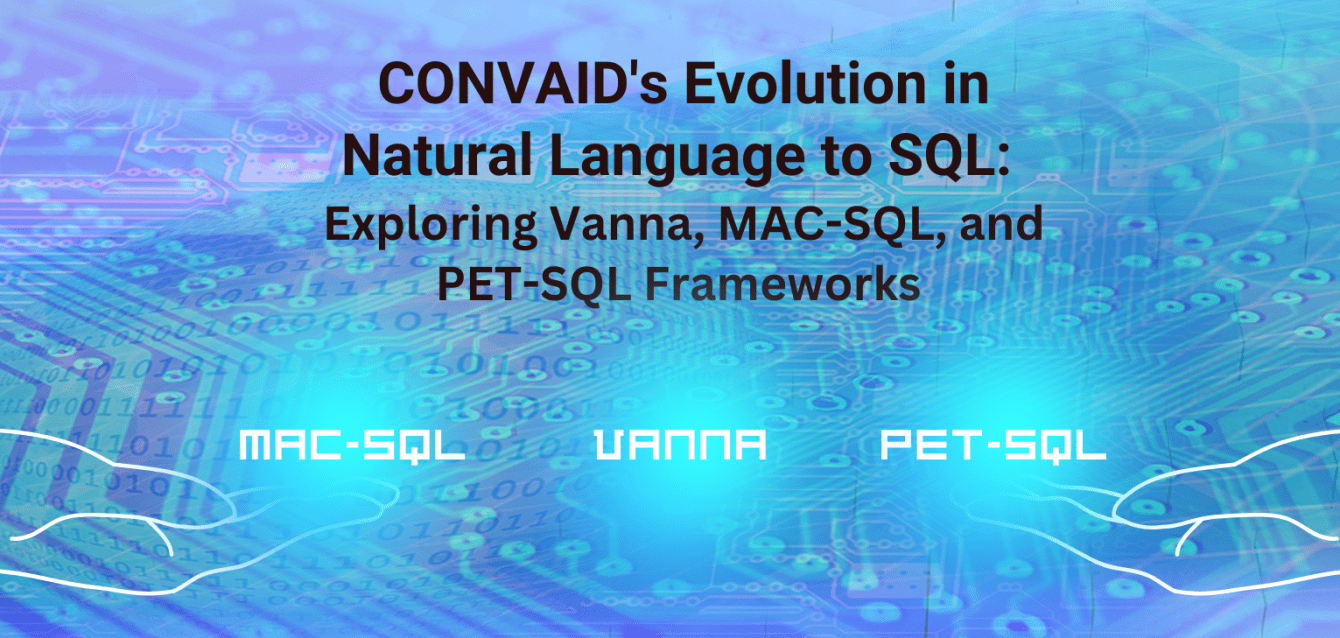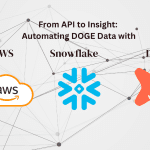Introduction
When I started working on CONVAID, a system designed to convert natural language into SQL queries, I realized that building an accurate and efficient pipeline required more than just using a large language model. The task involved understanding the intricacies of database schemas, improving query precision, and handling a variety of real-world queries. Over time, I explored multiple frameworks—Vanna, MAC-SQL, and finally PET-SQL—to refine the process and improve accuracy. This blog reflects my journey and the lessons I learned while enhancing CONVAID’s SQL generation capabilities.
Starting with Vanna Framework

My journey began with integrating the Vanna Framework, a Python package that leverages Retrieval-Augmented Generation (RAG) to generate SQL queries from natural language. The framework was promising, offering a way to incorporate user feedback and progressively improve query generation through reinforcement learning.
To make Vanna work effectively for CONVAID, I had to fine-tune it using data from multiple sources:
- Data Definition Language (DDL): I structured and uploaded DDL files to define the database schema.
- Table Documentation: This gave the model detailed insights into table content, helping it understand context better.
- Question-SQL Pairs: These pairs served as training data, allowing the model to recognize query patterns.
While Vanna provided a solid foundation, I quickly realized its limitations. It required significant manual review and validation, and its accuracy plateaued at around 66% despite numerous refinements. This pushed me to look for a more robust solution.
Enhancing with MAC-SQL Framework

To address Vanna’s shortcomings, I transitioned to the MAC-SQL Framework. MAC-SQL introduced specialized agents—Selector, Decomposer, Desemanticization, and Refiner—to break down and refine complex queries. This approach significantly boosted CONVAID’s ability to handle diverse and domain-specific queries.
Here’s how I improved the pipeline using MAC-SQL:
- Selector Agent: Retrieved the most relevant question-SQL pairs, improving the model’s contextual understanding.
- Decomposer Agent: Broke down complex queries into manageable components, making them easier for the model to parse.
- Refiner Agent: Iteratively corrected SQL queries, ensuring syntactic accuracy and reducing errors.
Integrating MAC-SQL resulted in a notable improvement, raising the accuracy to 68%. However, the additional LLM calls increased processing time and computational costs, which became a concern as the query volume grew.
Reaching New Heights with PET-SQL Framework

Determined to optimize both accuracy and efficiency, I turned to the PET-SQL Framework—a more sophisticated two-stage system that refined query conversion using advanced masking techniques and improved in-context example retrieval. PET-SQL was a game-changer for CONVAID.
Here’s what made PET-SQL stand out:
- Desemanticization Layer: Extracted and masked unnecessary information to prevent irrelevant context from interfering with query generation.
- Enhanced Schema Linking: Improved entity alignment between natural language queries and SQL schema.
- In-Context Demonstrations: Provided high-quality examples to the model, allowing it to refine its understanding during inference.
This refined pipeline pushed CONVAID’s accuracy to 86%, marking a significant milestone in my journey. The improvements in accuracy, coupled with reduced processing overhead, made PET-SQL the most effective solution for our SQL generation task.
Testing and Validation
Throughout this journey, I conducted extensive testing to validate each framework’s performance. I built a comprehensive test suite that evaluated the generated SQL queries on multiple dimensions, including syntax correctness, execution success, and logical accuracy. Comparing these results gave me a clear picture of how each framework contributed to improving CONVAID’s performance.
Lessons Learned and Looking Forward
Working through these frameworks taught me that enhancing a natural language to SQL system isn’t just about improving model architecture. It requires:
- Domain Adaptation: Tailoring models to specific databases by leveraging domain knowledge.
- Reinforcement through Feedback: Continuously refining query outputs with user feedback.
- Cost-Accuracy Balance: Managing trade-offs between accuracy and computational cost in high-volume environments.
The journey from Vanna to PET-SQL has been challenging yet rewarding, and I’m eager to continue pushing the boundaries of what CONVAID can achieve.





